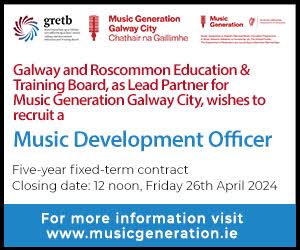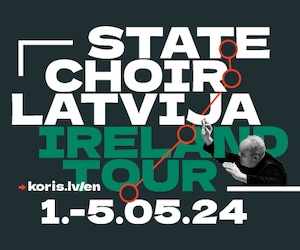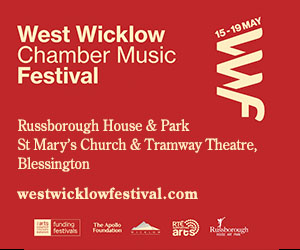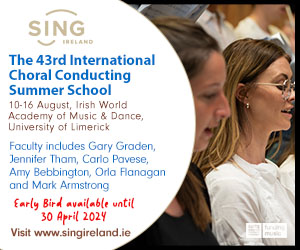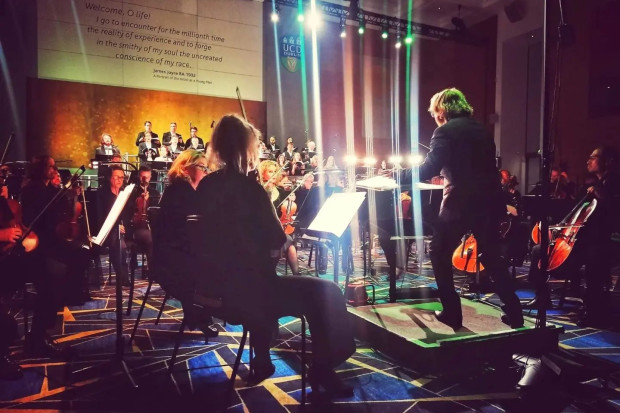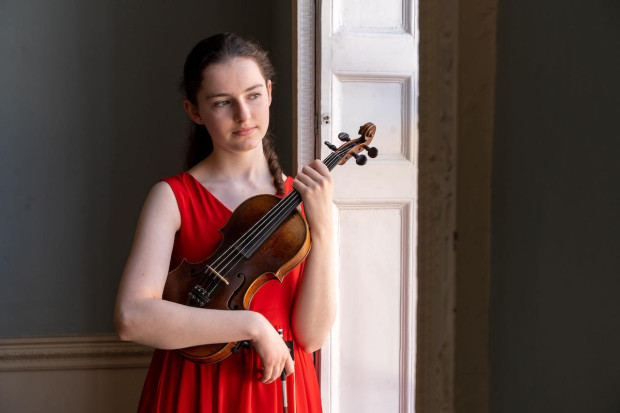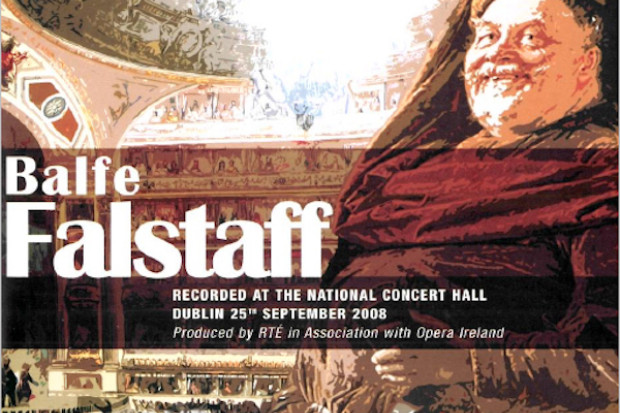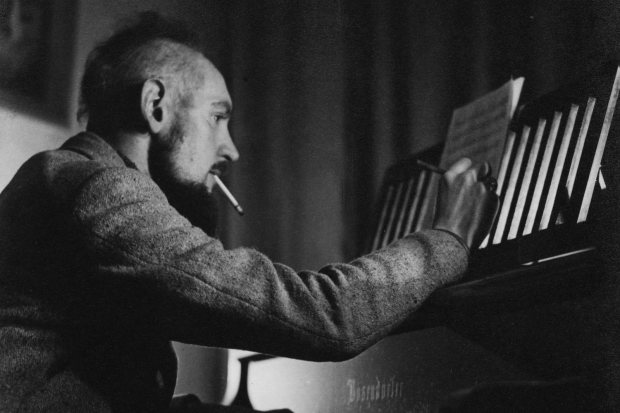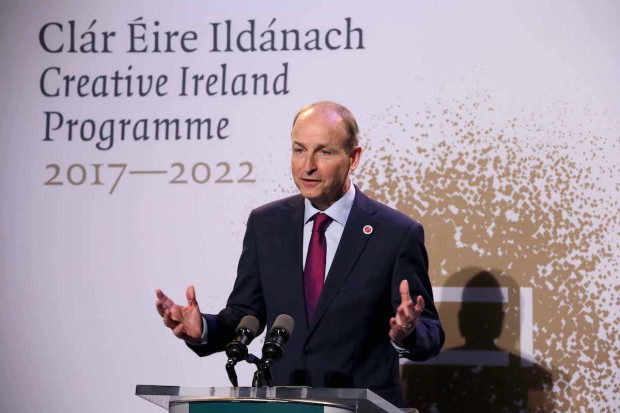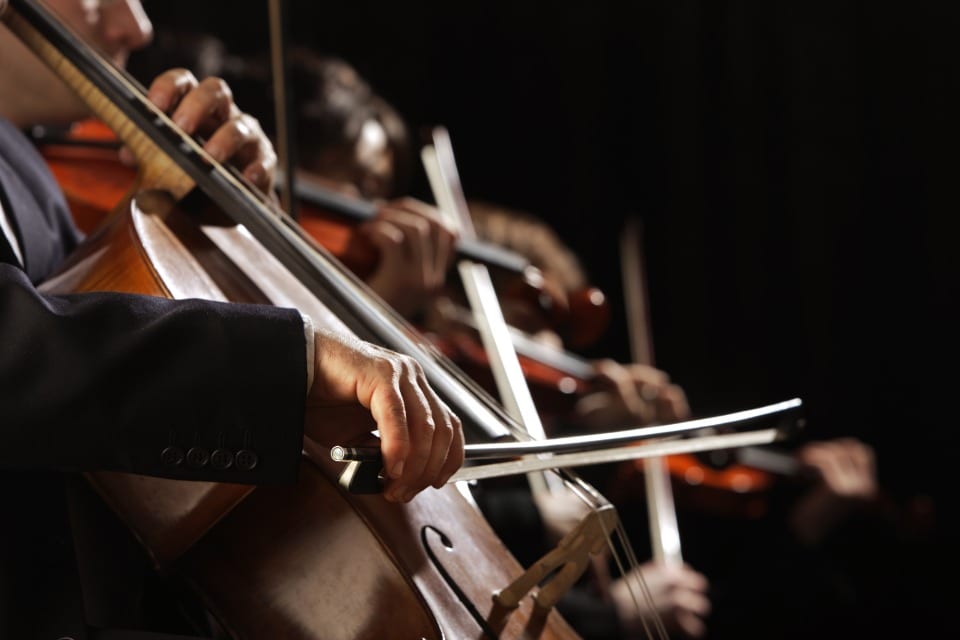
In Dreams Begins Responsibility: An Irish Academy for the Performing Arts?
It all began with a dream – and not today or yesterday. Almost a hundred years ago, Dr Annie Patterson, a founder of the Feis Ceoil, advocated ‘a free national conservatoire of music, such as exists in Paris and other continental centres… No more superb achievement of the twentieth century for the glorification of Ireland could be imagined’.[1] Well, the twentieth century has come and gone with no more than a whiff of such an achievement.
But John O’Conor, Director of the Royal Irish Academy of Music (RIAM), has for many years nurtured the vision of a properly resourced national conservatoire which could provide young Irish classical musicians, including conductors and composers, with full professional training at home, with the other performing arts – drama, dance, traditional music, jazz – enabling performers from different disciplines to feed off, and enhance, each others’ skills and energies.
As I will argue, this is like putting a layer of icing and cream onto a non-existent cake, and ideally the potential funding should be spent elsewhere, but given that a plan is theoretically in place for such a facility, this is probably the only chance that the country has of establishing an academy which is undeniably necessary. By the time this article is published, it is expected that those plans, first announced by the Government in December 1999, will have been reiterated and placed in the hands of an adminstrative board.
O’Conor was assiduous in courting both public opinion and the ears of civil servants and members of successive Governments in its favour. He first aired his views publicly on the RTÉ television arts programme Black Box and later in an RTÉ radio Thomas Davis lecture (commissioned by myself), describing ‘a third-level music institution… with an active junior department concentrating on instrumental and vocal performance and teaching’.[2] This, O’Conor proposed, might involve a merger of the skills and resources of the RIAM and the self-styled DIT Conservatory of Music and Drama, which he believed at the time was a real possibility. (It had first been mooted by León Ó Broin, Secretary of the Department of Posts and Telegraphs back in the 1950s.) O’Conor argued persuasively that Ireland was the only European country without such provision – even Luxembourg has one (although technically the Paris Conservatoire is national in character though not in name, while the UK has no national conservatoire, but enjoys a plethora of institutions where a third-level performance degree can be pursued at a higher level than is available at present in Ireland).
The chief issue is one of standards: it is still necessary to recruit abroad for most sections of the NSO, partly because we have no national training orchestra, partly because the exposure of students to teachers of international calibre is very restricted. A national training orchestra would have been a real possibility if the RIAM (which first propounded the need for one about ten years ago) and the DIT could have co-operated. The number of Irish classical musicians with an international reputation is tiny (actors are more successful in this regard); since the time of Hamilton Harty (d.1941) Ireland has only ever produced three conductors of international achievement, and works by Irish composers are seldom performed abroad.
When, therefore, the incoming Government’s Action Programme for the Millennium in 1997 announced that a ‘Dublin Centre for Performing Arts incorporating a Conservatoire’ would be established, it seemed as if that dream had come true. The Taoiseach, Bertie Ahern, inaugurating the RIAM’s 150th anniversary celebrations in January 1998, announced that the viability of such an institution would be examined by a joint working party (JWP) of the Departments of Arts-Culture and Education. This should have sent a warning signal to those who thought the cat was in the bag. As Sigmund Freud has proved, the interpretation of dreams is a complex business, involving far more work than simply having the dream in the first place which, after all, you can do in your sleep.
Between January 1998 and January 2000 there was a long period of waiting by the potential participants, a long period of silence on the part of the policy-makers and a long process of chopping and changing behind the scenes on the part of the civil servants and the political minders. The lack of consultation during that process caused the death of the original vision and its replacement by a political solution which is in most people’s view unworkable and thus a waste of public money which could be more effectively spent in other areas of arts education.
Initially, the JWP, chaired by Noel Lindsay, former head of the Higher Education Authority, invited submissions from interested parties, to be received by the end of May 1998. Its interim report was delivered in July 1998, recommending the remaining UCD premises at Earlsfort Terrace (with the NCH at its centre) as the location for IAPA. But in a dramatic departure, in May 1999 a report commissioned by the Taoiseach’s office from Deloitte and Touche recommended a change of direction towards Dublin City University (DCU) as the site. Simultaneously, Ministers Síle de Valera (Arts) and Micheál Martin (Education) commissioned an independent consultancy report from Dr Peter Renshaw, Head of Research at London’s Guildhall School of Music and Drama, which proposed a ‘nodal’ solution (breaking the unitary concept into regional constituents) and also identifying DCU as the preferred site, where the university was already building a new Arts Centre and Concert Hall, providing a new home for the RTÉ Concert Orchestra and intended by DCU specifically as competition for the NCH. This ‘node’ would contain the music faculty, to which the RIAM third-level activity would be transferred, plus the drama faculty which would be supplied by the Gaiety School of Acting (GSA). The other two ‘nodes’ would be in Cork (Firkin Crane Dance Company) and Limerick (Irish World Music Centre).
Some unease was expressed by DCU at the idea that it had ceded a site for IAPA over which it would have no further control, since its governing body had not been aware that such a gift had in fact been made, but, after some very blunt words from government, that unease was swallowed. No one appears to know how Peter Renshaw arrived at his conclusions, or what weight they carry today, although the fact that some of the most significant statements in the eventual Government announcement were lifted straight out of his report, suggests that considerable reliance was placed on it. And very few know how the Deloitte and Touche report was commissioned, and almost no-one has seen it, yet its financial, managerial and infrastructural findings were crucial to the Government decision to locate the main part of IAPA at DCU.
It would be easy to rubbish ‘Renshaw’ (which has been described as ‘deeply flawed’) by focussing on its many factual errors which led its author to make recommendations ranging from the unwise to the preposterous. He seemed to be very unfamiliar with the arts situation in Ireland and especially with existing provision for arts education. To place such reliance on an alleged expert in such circumstances appears extremely hazardous until we realise that the whole operation at that stage was required to be expedited without recourse to detailed work – in other words, Renshaw was encouraged to be superficial in making recommendations about a project which would have radical consequences for arts education. But the real ‘flaws’ in Renshaw are twofold: (1) it is a document without a philosophy, leading many to believe that the architecture of IAPA is considered to be more important than its population and (2) it dances to a pre-arranged tune: the Government announcement stated that the three-location ‘nodal’ structure was the model recommended by Peter Renshaw, but the fact that Renshaw considered no other possibilities indicates that he was given no options to consider other than the nodal one. Which is a bit like a doctor consulting himself to get a second opinion on whether he is a doctor or not.
The thinking goes: Ireland has no national conservatoire. Give Ireland a conservatoire and everything will be alright. Put something in place, because then we won’t be the odd ones out. Oh really.
The ‘secrecy’ – as it has been described – with which the JWP went about its work has alarmed many. Denis Kennedy, Professor of Drama Studies at TCD, Vic Merriman (his opposite number at DIT) and Ellen Hazelkorn, DIT’s Head of Applied Arts, are the most prominent to express their surprise at the lack of transparency in proceedings to date, and the selectivity towards those whose submissions were followed up.
Given that the whole idea was the brainchild of John O’Conor, who had the ear of the Taoiseach from early on, it is hardly surprising that the RIAM emerged as a major player in the possible IAPA, but it demonstrates a contemptuous attitude to the DIT submission which is inexplicable unless political considerations were involved – as many suspect they have been. DIT, I have been informed, never had even an acknowledgement of its submission. And although the GSA (run by Patrick Sutton, the Taoiseach’s voice coach) undoubtedly produces actors of a very high calibre, it is extraordinary that the TCD courses, run in a strategic alliance with the National Theatre, were not investigated to see whether they might not have a role to play in an academic institution.
That contemptuous attitude was eventually directed at the RIAM itself, and led to a virtual breakdown in the planning process. The RIAM submission to the JWP, dated May 1998, was predicated on the argument that some kind of merger of staff and students was necessary between the RIAM and the DIT Conservatory of Music and Drama in order to achieve critical mass and to rationalise resources.The conservatoire should be in one location so that a cultural osmosis could be generated between faculties. More crucially, perhaps, was the need to maintain the first, second and third levels of the RIAM as an integrated structure (as is the case with many of the world’s top conservatoires) – the thinking here being that there was a natural progression from junior to senior level which it would be disastrous to arrest, especially since the music colleges in Ireland fulfil functions which should properly be addressed in primary and secondary level.
After two years of speculation, in January 2000 the two Ministers announced the intended establishment of an Irish Academy for the Performing Arts (O’Conor’s preferred title), with the three ‘nodes’. The capital expenditure would be £35m and the timescale for putting IAPA in place would be five years. No consultation whatsoever had taken place in the interim, although the main submission, the RIAM’s, had effectively been set aside, and the entire raison d’être of O’Conor’s brainchild had been eliminated from the plan.
A Steering Group, composed of the proposed participant colleges and civil servants, chaired by Danny O’Hare, ex-President of DCU, was established to put the IAPA in place. But due partly to a lack of information as to what was envisaged, and a lack of clarity as to what form of commitment was required of the participants, there appeared to be a reluctance in some quarters to look positively at the proposal. The deeply divided dance ‘community’ in Ireland was outraged by the lack of consultation and serious questions were asked about the decision to entrust Firkin Crane with the responsibility for third-level dance training. Even allowing for the historical vulnerability of dance as an art form in Ireland, which has been identified in many reports but never satisfactorily addressed, that decision, and an almost simultaneous grant to Cork School of Music to drastically remodel its cramped premises, suggested political profiteering by then Minister, Micheál Martin.
The Government decision was obviously based (if anything can be obvious in such an uncertain situation) on the assumption that the RIAM would be viable on its own for such an undertaking, a point on which the RIAM was not consulted. And, as Vic Merriman puts it, splitting the IAPA across the country ‘requires a level of student mobility that is untenable’.
It was the unenviable task of Danny O’Hare to steer the Steering Group into achieving a viable academy. No doubt some knocking-heads-together would be necessary, and, as I know from personal experience, a certain amount of what can only be described as bullying took place both within and without the Steering Group. There was major resistance to the scheme (not least because matters were not being spelled out in a fashion which permitted open debate), so much so that its successful implementation was (and still is) uncertain; of course there will be major political embarrassment if the scheme were to prove unworkable. One of O’Hare’s problems was that the elements to be amalgamated into a workable IAPA, by some yet-to-be-defined (or yet-to-be-revealed) process, were, to say the least, disparate. The RIAM, 150 years old, offers teaching from pre-instrumental for tiny tots through diplomas to undergraduate and postgraduate degrees validated by TCD and DCU. The IWMC (still in its infancy) undertakes no undergraduate teaching, but has a rapidly growing list of Masters degrees in various aspects of music making and musicology. Neither the Firkin Crane dance company nor the GSA awards any degrees.
It was clear at the outset that at least two of the likely participants, RIAM and IWMC (as part of the University of Limerick), were unwilling to cede control over their degree programmes, so that another of O’Hare’s problems was to devise a structure wherein each constituent could contribute to achieving the overall ambitions of IAPA without losing its autonomy. At the same time IAPA, as a funding body of such magnitude, would have to be seen to exercise some elements of power, to be more than a mere conduit for funding.
The Renshaw report was unclear on this question: how IAPA should go about its business – should it be an ‘umbrella’ organisation or have hands-on, day-to-day administration of the constituent parts? This uncertainty was carried over into the ambiguity of the Ministers’ announcement. And although the Government memorandum on the subject is said to hold the solution, it is, as part of the Cabinet papers, exempt from the Freedom of Information Act so that not even the members of the Steering Group could see what it was they were supposed to steer.
The University of Limerick at first resisted the proposal: it was willing to become an ‘associated node’ – that is, it would co-operate with IAPA but it would retain control over the IWMC and would receive no IAPA funding. This meant that its association with IAPA would be so tenuous as to be almost meaningless. Eventually, it agreed that the IWMC would in fact be a full node – although it is not clear how that can be reconciled with IWMC continuing to be part of UL, since it will also have to be part of an autonomous IAPA: it can be reasonably presumed that more blunt speaking caused it to change its position so radically. The position of the GSA and of Firkin Crane – which has since changed its name to The Institute for Choreography and Dance – is also unclear.
The RIAM, after much negotiation, both internally and with Danny O’Hare, could get no assurances regarding its autonomy or its teaching practices. To hand over its degrees, which had been built up over a 20-year period, seemed suicidal. The teaching staff were so apprehensive about their possible future and their tenure that no amount of reassurance by management would allay their anxieties. The Governors were told by Danny O’Hare that to hand over the degree programmes would indicate ‘a spirit of generosity’. The reaction was somewhere between the derisory and the apoplectic. Believing that their first duty was to the institution’s modus operandi and its ethos, the Governors signalled to the Taoiseach that they were unhappy with the demands being made. The Taoiseach very gently asked them to try to find a compromise. Twice they went back into negotiations, going so far as to devise a formula whereby the RIAM would vote itself out of existence, providing that a Trust was established to ensure the survival of its current structure as a constituent of IAPA. Although O’Hare thought this was workable (mainly because it was the only means by which he could deliver a music faculty as part of IAPA) this too was rejected, but by whom remains a matter of speculation. Ultimately the decision was taken by the RIAM to withdraw definitively from a project which it saw as completely unworkable in circumstances in which there was no pragmatic assessment of the real needs of conservatoire-style education, thus leaving the Steering Group with no identifiable music faculty available to it.
I believe that when O’Hare (who found it hard to understand that third-level music teaching is almost all on a one-to-one basis, and who did not easily grasp that most conservatoire teachers are part-timers with other work elsewhere, such as in the NSO) realised that his, the Education Department’s and the Taoiseach’s urgings were being so firmly resisted by the RIAM, he knew he could not carry out the task he had been given. In the summer of 2001 it was therefore announced that the Steering Group had completed its work, and that an interim Governing Body would be established, which would proceed to appoint a Chief Executive or President. How it could do so when the structure and functions of IAPA remain so uncertain is a mystery, but at the time of writing Carmel Naughton (shortly to step down as Chair of the Board of the National Gallery) is the chair (and sole member) of this interim authority, of which she expects that the other members would be announced on 25 February. She has inherited the poisoned chalice which Danny O’Hare so obviously refused to consume and so skilfully passed to her. Unless she was flattered to be offered the chair of another cultural institution – albeit one with no shape, function or even perhaps future – one cannot imagine why she accepted the position. The creation of such an institution, especially the establishment of a music faculty with no raw material to hand, and with absolutely no back-up or expertise within the Departments concerned, and one which will not see any enrolments for at least five years, is much more than a daunting task – it, too, is fatally flawed.
Already we have seen an open disagreement, with Mrs Naughton suggesting that DCU might not be the most appropriate site for IAPA (a position with which DCU might agree), only to be publicly slapped by the Minister for Education, Michael Woods, who insists that the scheme goes ahead as planned.[3] In these circumstances, should the IAPA proceed at all? Can it succeed in circumstances so different from those in which it was conceived? Could not the money be spent to better effect elsewhere?
If I had to spend capital of £35m and £6m per year thereafter on arts education, I wouldn’t go near the third level. I would address the appalling lack of philosophy and provision regarding arts education in our primary and secondary schools, and, resulting from that, the lack of infrastructure and provision of proper training for teachers.
Third-level music education in Ireland is a pyramid without a base. Those who arrive at the summit have done so with little or no help or support from the State. In Finland, by contrast, every county has its local conservatoire and specialist music schools (over 100 in a country with a population similar to that of Ireland), rising in a career path for the budding professional towards the pinnacle, the Sibelius Academy. Here, we are heading for a ‘Sibelius’ situation with none of the supporting structure in place. This is a fact of which neither civil servants nor politicians seem to be aware: I have actually heard the Secretary-General of the Department of Education and Science proudly state that music education in Irish schools is in excellent shape. Howls of derisive laughter.
At the time of the Government announcement on IAPA, Minister Micheál Martin said that he was aware of this lacuna in music education and was going to do something about it (another joint working party with Arts-Culture). And if he had remained with the education portfolio something might have happened, because he had a genuine interest in, and understanding of, the problem. But subsequent statements by the Department of Education lead one to suspect that the dismissive and condescending attitude which has habitually characterised the civil servants’ inattentiveness to music – and the arts in general – has been reasserted. More good work was done in a modest and almost resourceless fashion by the late James Blanc, long-time secretary of Ceol Cumann na nÓg, running Schools Concerts in association with the RTÉ orchestras, than all the civil servants since the foundation of the State. My personal experience of running those concerts, attended by hundreds of thousands of schoolchildren, is one of the most moving memories of my professional career, but it is also a damning indictment of the educational system that, by default, its work was done for it by others.
I was appalled to read a report by Barra Boydell on the growth in numbers, and the concomitant decline in standards, in the music department in Maynooth, as a result of changes in the Leaving Certificate.[4] Yet it is the predictable result of the pathetic attempt to remedy the teaching standards and activity in Irish schools by means other than those which are pedagogically effective. Unless it can be definitively established that IAPA will represent a quantum leap in arts performance through third level education, it is questionable whether it will satisfy the criterion recently set by the Comptroller and Auditor-General in respect of capital expenditure which duplicates existing resources. Merely to amalgamate existing provision, while adding another tier of bureaucracy, will not achieve the professed aim of IAPA (in Minister de Valera’s words, which echo those of Annie Patterson and John O’Conor, ‘to transform the nature and quality of education and training in the performance arts’), nor will its £6m annual budget give ‘added value’ to the money currently funded to RIAM, DIT, Cork and IWMC.
In my view, the most effective – and necessary – third-level institution which could be created would be an élitist tier of arts education for performers at a higher level than anything happening in Ireland today: a place where only the cream of junior Irish and international talent was trained for a performance career by the cream of senior Irish talent enhanced by international expertise, working with the hugely versatile RTÉ Concert Orchestra (if IAPA is indeed to be in DCU, notwithstanding its Chairman). If excellence is the aim, then the muddled thinking which has brought the dream of an IAPA to this point of disillusion is completely out of place because it is tied to existing conditions, practices and standards which, however well intentioned, are totally unsuitable to empower that quantum leap. Thinking (if one can call it that) within the Department of Education could not even conceive of the same dream that inspired and drove John O’Conor, and has certainly proved incapable of supporting it. Instead we have the spectacle of further departmental arrogance foisting Carmel Naughton onto the sharp end of a white elephant.
The questions which need to be answered at this stage are:
• what strategic view of Irish arts education has been formulated which will provide IAPA with its raison d’être?
• what steps will be taken to ensure that the degree of excellence required in the teaching and administrative staff of IAPA will be transmitted to the students?
• what organic relationship will exist between IAPA and the primary and secondary sectors in education?
• what will be the legal status of the governing body and its legal relationships with the constituent bodies?
• how will the governing body secure the expertise necessary to establish the various faculties and to ensure that they are of equal academic standing?
• to whom will the governing body of IAPA be accountable?
Not to address these concerns would be a fundamental abdication of responsibility. The arts are not ‘nice’ – not something which will take care of themselves. The arts are big business. The arts are a highly prized – if seriously neglected – part of our heritage. The arts in and from Ireland are an internationally traded commodity which confers very significant benefit, culturally, socially and economically, on Ireland. The complacency which has surrounded the development of IAPA so far – trading on the idea that everyone involved is ‘nice’ and that the arts are ‘uplifting’ and therefore hardly in need of help – will make this into an international laughing stock unless there is a radical rethink of the entire project. John O’Conor would be the first to acknowledge that internationally music, like all the arts, is a jungle in which at present young Irish performers are ill-equipped to flourish.
All of this may seem like a giant whinge. But with a once-off expenditure of this magnitude and significance, it is essential (i) that the IAPA is set up with the right targets and the right structure, (ii) that it has the right relationships with existing institutions, (iii) that it actually works and (iv) that it is seen to be set up and to be run in a transparent fashion. None of these possibilities exists at present. We have been too soft on our arts training. It’s time to toughen up. And to stop dreaming.
Notes
1. Journal of the Ivernian Society, vol. 2 (1909), p. 42.
2. J. O’Conor, ‘Towards a New Academy’, in R. Pine (ed.), Music in Ireland 1848–1998, Mercier Press, Cork, 1998, p. 142.
3. Irish Times, 7 and 8 February 2002.
4. B. Boydell, ‘Third- Level Music and the Leaving Certificate’, Journal of Music in Ireland, vol. 1 no. 4, pp. 14-17.
Published on 1 March 2002
Richard Pine, Director of the Durrell School of Corfu, is a former Concerts Manager in RTÉ. He is the author and editor of books on Irish music history and of definitive studies of Oscar Wilde, Brian Friel and Lawrence Durrell.






